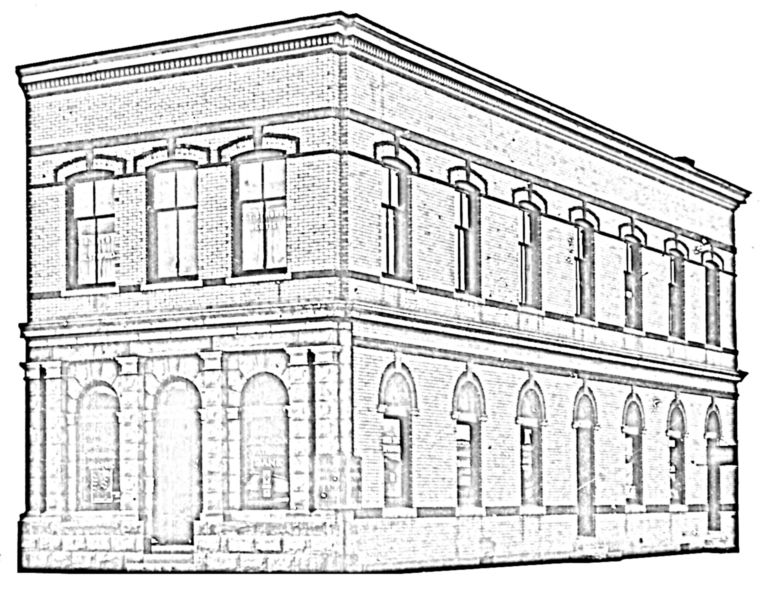| Three Forks Area Historical Society - Area History Page 2
|





|
|
HEADWATERS HISTORY Page Two: 1860s to 1890s
The Headwaters area was part of the original Dakota Territory, then part of the Idaho Territory, and in 1864, the Montana
Territory was formed.
That same year, gold was found at Last Chance Gulch (present day Helena). Many of the miners from Bannack, Virginia City
and Nevada City flocked north. A trail of sorts was beginning to form through the Willow Creek valley, and many families
settled along the trail, including a number of displaced Mormons and Missourians. Pioneers of the Willow Creek area include
the Banta, Hale, Geddes, Tinsley, Williams, Nave and Richie families.
A. E. Mathews traveled extensively throughout the region. In his "Pencil Sketches of Montana," published in 1868, is a
sketch of the headwaters area which shows the remnants of Gallatin City I, the fledgling town of Gallatin City II, the ferry
across the Missouri and a freight wagon drawing up to the ferry from the western bank.
In 1870, the United States conducted its ninth census, and Montana Territory was included in preparation for eventual statehood.
At the time, the boundaries for Gallatin County extended east into present day Park and Sweet Grass counties. The census divided
Gallatin County into six precincts: Bozeman, Noble (present day Four Corners and south), East Gallatin (Springdale area), West
Gallatin (present day Manhattan area), Gallatin City, and Willow Creek. In his book "Taylor Made; Gallatin County's First Census,"
local historian Patrick Finnegan writes about the places, people and events taking place in Gallatin County, using the 1870 census
as a guide.
Major James Campbell and his wife Sarah, respected residents of Gallatin City, hosted Surveyor General Washburn and his party one
night in 1870 as they traveled to Ft. Ellis near Bozeman. Washburn later joined with his military escort led by Lt Gustavus
Doane, and the party traveled to "Yellow Stone" to survey the area. The Washburn - Doane reports were the basis with which
Congress established the first national park in 1873.
In 1870, Lt. James Bradley traveled through the area and noted in his diary the ruins of Fort Three Forks, established in 1810.
He mentions the anvil, supposedly left behind by the fur trappers, but did not see it because James Alpin had found the anvil in
1867 and was using it in his smithy at Gallatin City.
In 1881, James Shedd's Madison House burned down and within a year two Englishmen, Hanley and Paul, had purchased the land in
and around the Madison House. They platted the town of Three Forks (Old Town) and built a large hotel. For several years, the
town was the center of a British "Remittance Colony," a place for English Lords to send their younger sons to "sow their oats."
In 1883, the Northern Pacific Railroad established a work camp near the mouth of the Gallatin River, which later became the section
house for the railroad through the headwaters area.
In 1884, a constitution for the state was drawn up, but it got nowhere due to politics in Washington D.C. That climate changed,
and four states were admitted to the union in 1889: Montana, North and South Dakota and Washington.
By 1890, the Northern Pacific railroad had completed a spur from Canyon House (Logan, MT) to Butte via the Jefferson River canyon.
By this time, Gallatin City II was becoming a ghost town and its post office was discontinued in favor of Three Forks.
Between 1864 and 1893, local residents were investing in mining operations a few miles northwest of the headwaters area at a place that
would become known as Copper City. Gold, silver and copper were found in sufficient quantities to merit the attention of Copper
King Marcus Daly. Daly purchased 4,000 acres of land in and around the Three Forks area for the Anaconda Company, and newspapers
were rife with the speculation that Daly would establish a smelter in the area. But production levels at Copper City were never
enough to make a smelter viable.
Headwaters History Page One - 1350 BC to 1860s
Area History Main Page
|
|
|




